by Todd Rutherford
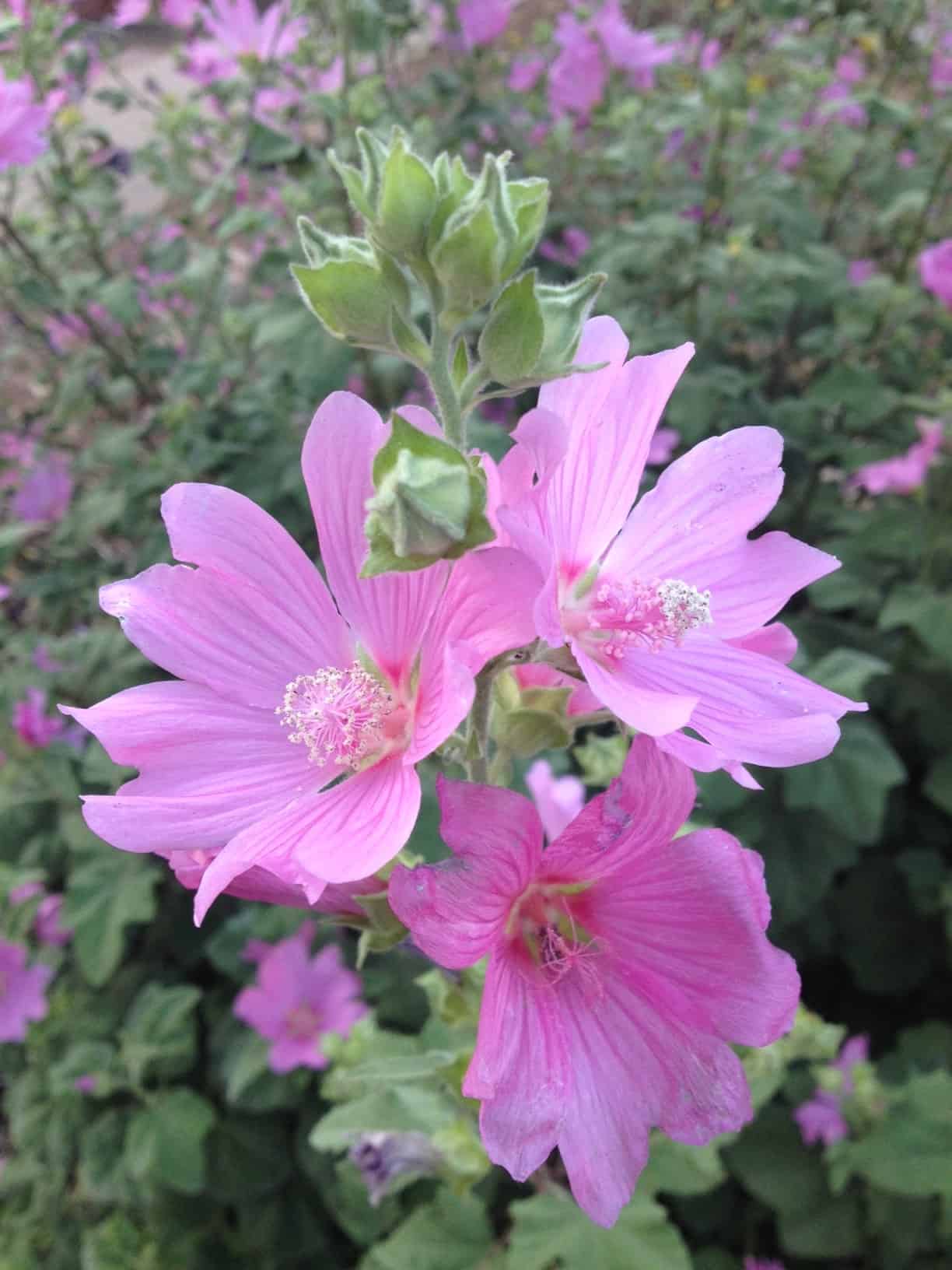
I had never heard of a Hollyhock Mallow, but I came upon this delightful plant while visiting a friend last month. This interesting horticultural specimen was blooming in my friend’s neighbor’s yard. The profusion of pink blooms caught my attention from the corner of my eye, and I instantly raced over to get a closer look. Initially the flowers brought to mind common hollyhocks, but the form of this plant and the leaves were not quite the same as true hollyhocks. It took a little bit of internet sleuthing to arrive at the conclusion of what the plant was. I am still trying to learn more about this plant to determine if it is a good addition to the list of perennial plants for low water gardens.
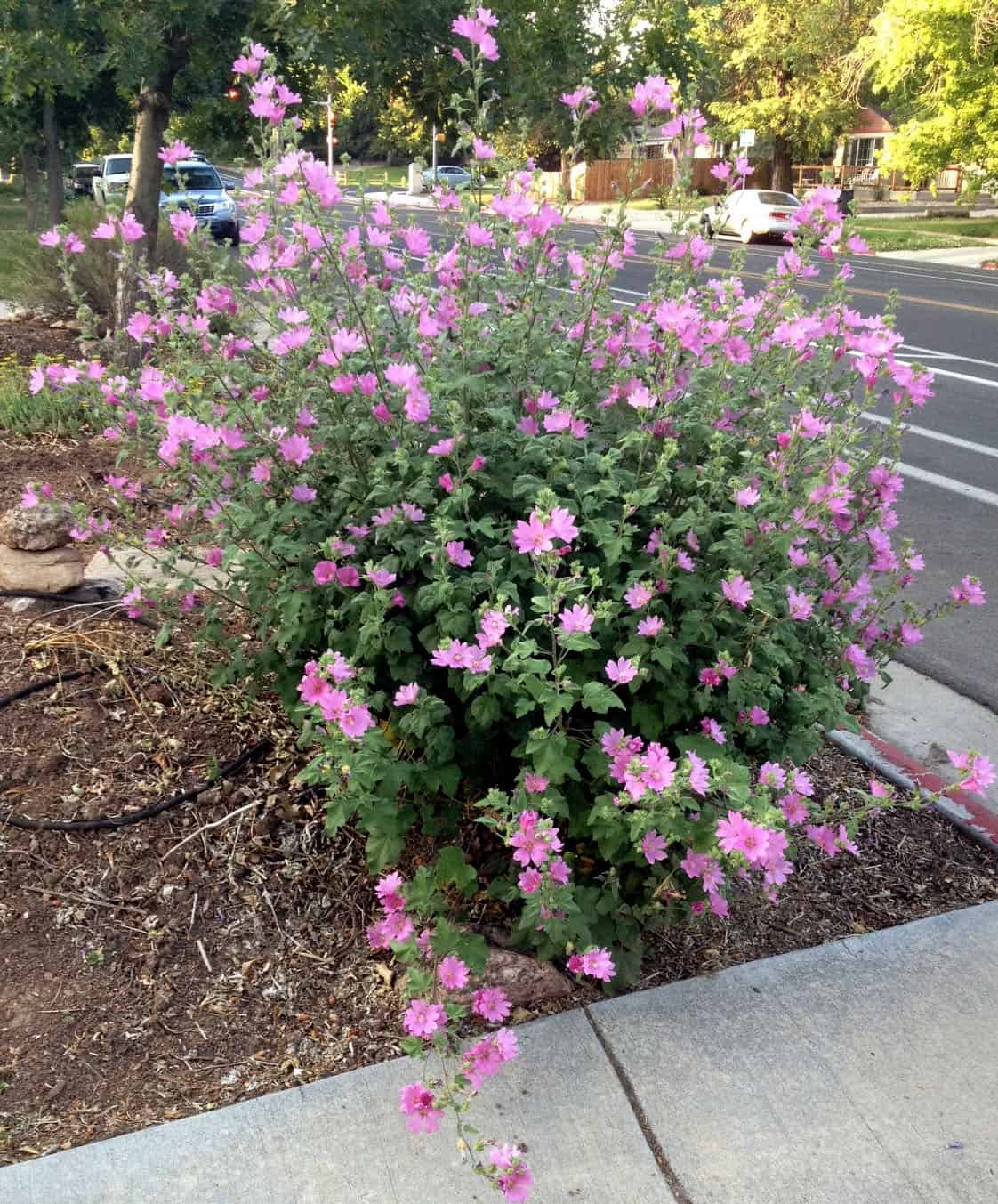
Hollyhock Mallow, aka Malva alcea, is native to parts of Europe and Central Asia. As the common name implies, it is related to common hollyhocks (Alcea rosea) that many a grandmother has grown from seeds. Malva alcea is an herbaceous perennial that grows about 4′ in height, by 2-3′ wide. It has moderate water needs, but reportedly is drought tolerant. Unfortunately, it can fall prey to Japanese beetles, foliar nematodes, leafhoppers and spider mites. I wonder if it is plagued by the same leaf problems that make common hollyhocks look so beleaguered towards the end of the growing season. In some regions of the U.S. it has escaped cultivation and become naturalized. I do not know if it is invasive in Colorado. I look forward to learning more about this plant, and possibly testing it out in my own garden beds.
This is the official blog of Outdoor Design Group, Colorado Landscape Architects. For more information about our business and our services, click here.
Related Posts:
by Todd Rutherford
June is finally here, which gets me thinking about cactus flowers. I wanted to share these photos I took of a gorgeous flowering cactus that was growing in a park called Kendrick Lake Park, located in Lakewood, Colorado.
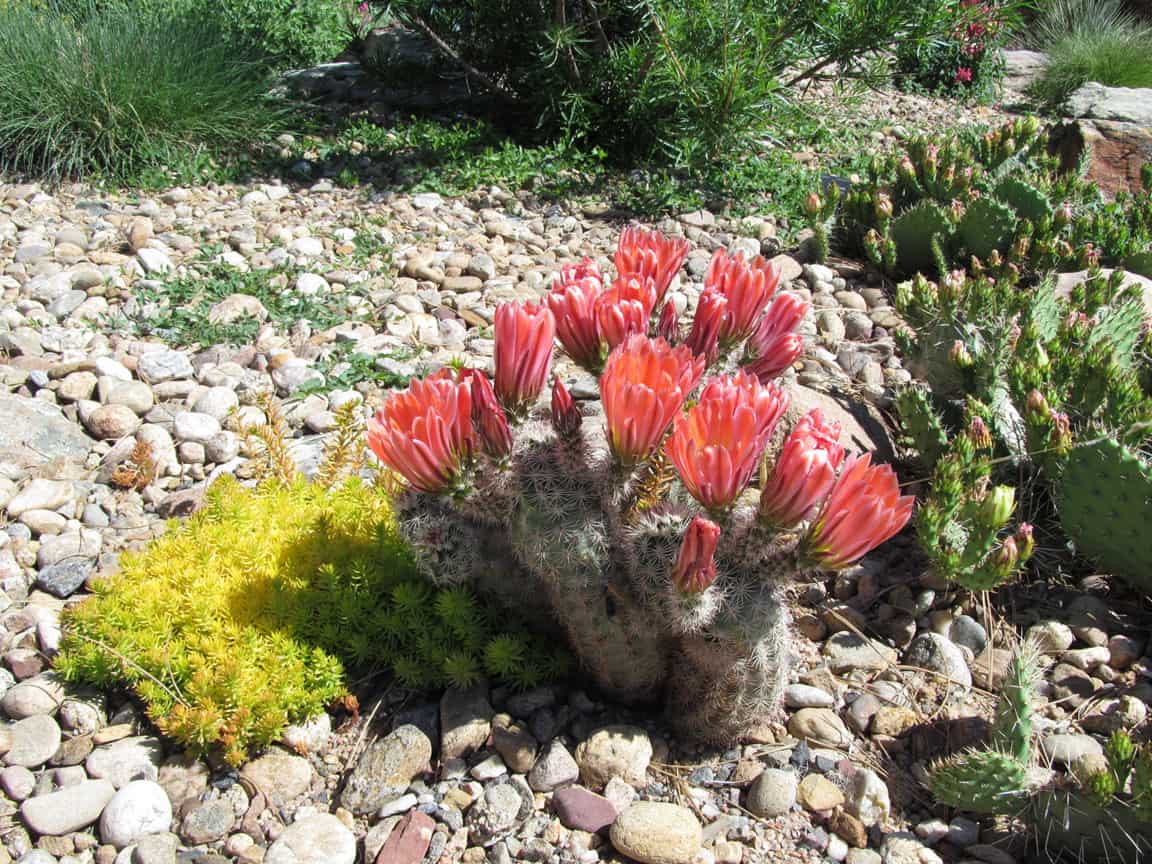
The xeriscape gardens at Kendrick Lake are quite impressive. June is a good time to visit for the chance to see the various cacti that dot the gardens, blooming in their early summer glory. On an interesting botanical note, I recently learned from cactus expert Kelly Grummon’s website (coldhardycactus.com) that in order for these cacti to bloom, one of the criteria is a cold enough winter. “If a cactus doesn’t get enough cold weather, it will not flower normally in the spring”, he says.
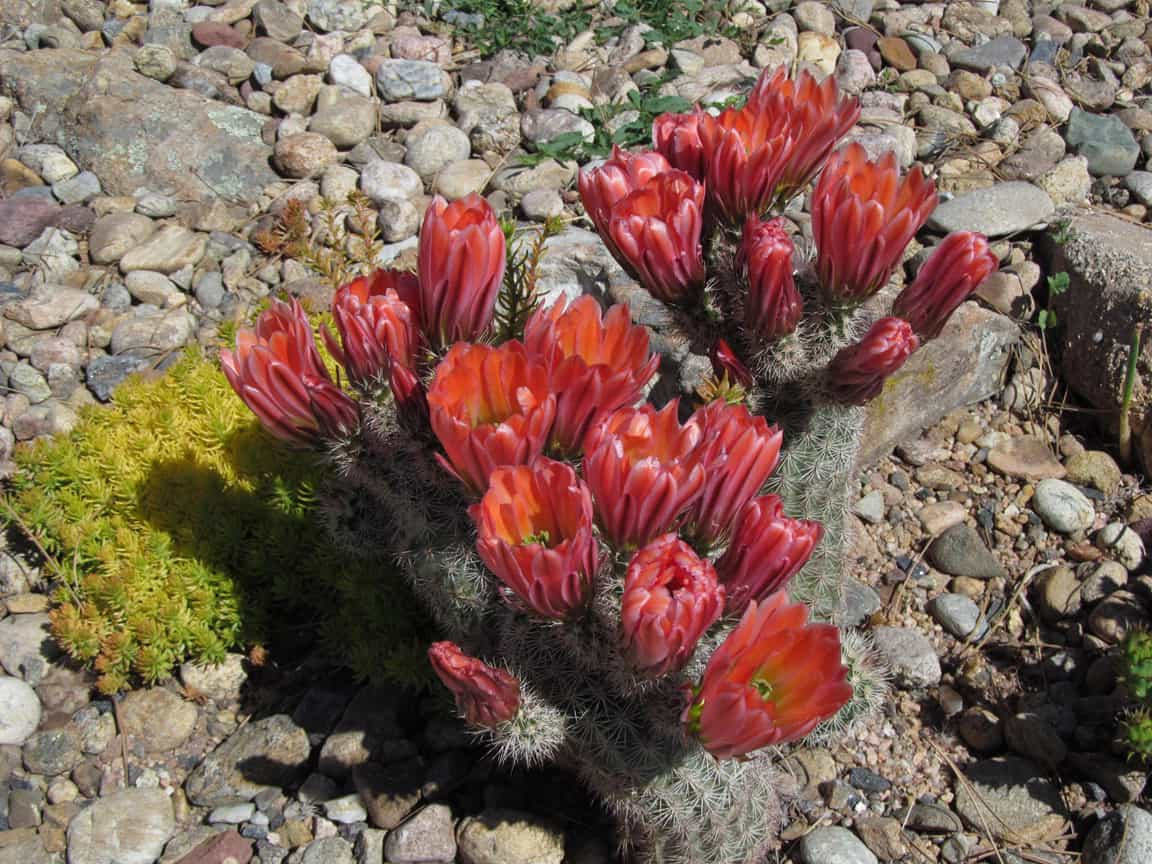
At first I thought the cactus in these photos was Echinocereus ‘White Sands’. But upon further inspection of the flower color and the size and density of the spines, I am guessing it might possibly be some variety of Echinocereus reichenbachii. Whatever species of cactus it happens to be, it is stunning to see it when blooming.
I recommend visiting Kendrick Lake in June to enjoy the cactus blooms, as well as many other stunning flowering xeriscape plants on display.
This is the official blog of Outdoor Design Group, Colorado Landscape Architects. For more information about our business and our services, click here.
Related Posts:
by Todd Rutherford
A few months ago, on a trip through New Mexico, I stopped by Ghost Ranch for a short visit and hike. Ghost Ranch is a beautiful area in north central New Mexico. It is a retreat and education center that belongs to the Presbyterian Church, but is open to the general public (all visitors must register with the visitor center). Though there is a long history to the Ranch, perhaps it has become most well known due to its links with the artist Georgia O’Keeffe, who once owned a home on a small portion of the Ranch.
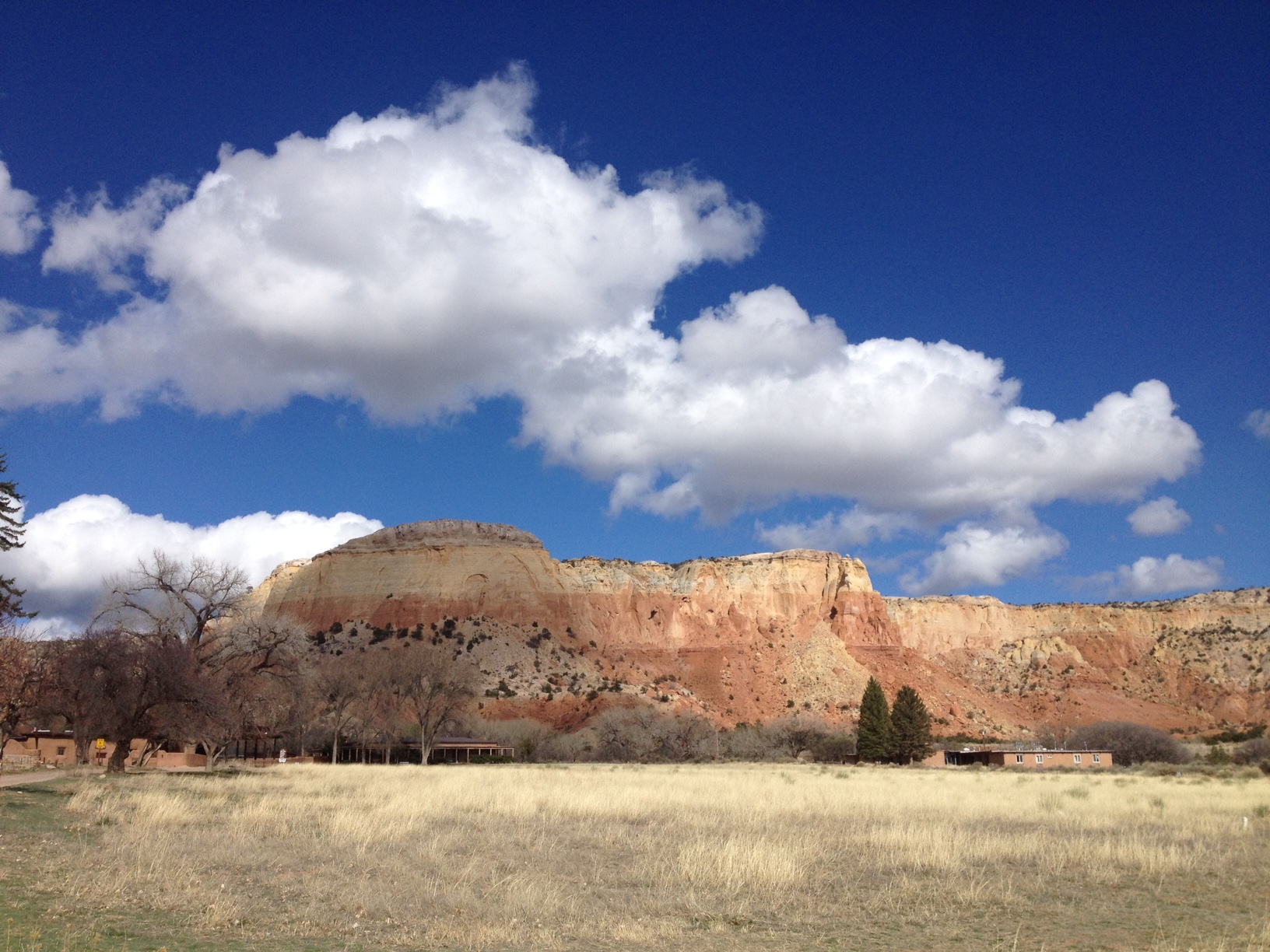
Near the Ghost Ranch Visitors Center.
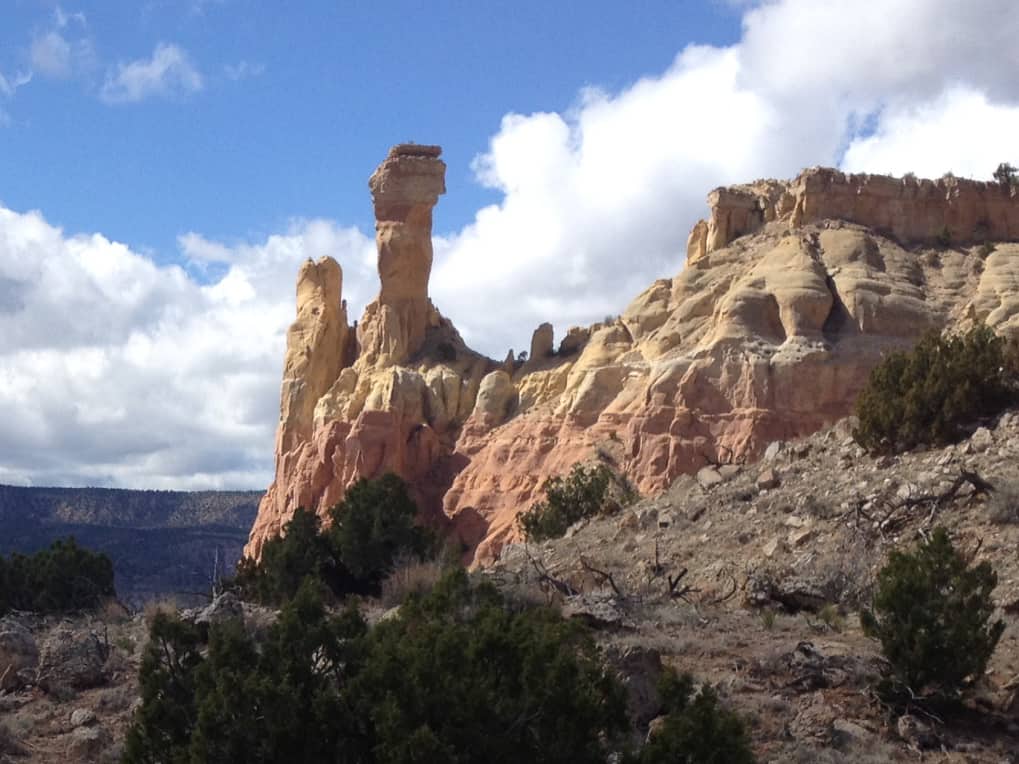
Chimney Rock
There is an easy and rather popular hike to a rock formation called Chimney Rock, not far from the Ghost Ranch Welcome Center. As I ambled along the trail to Chimney Rock on that cool and windy Spring day, I was delighted to come across what I believe to be Yucca harrimaniae, occasionally dotting the sides of the trail. This small and very charming yucca was quite numerous on areas along the hike.
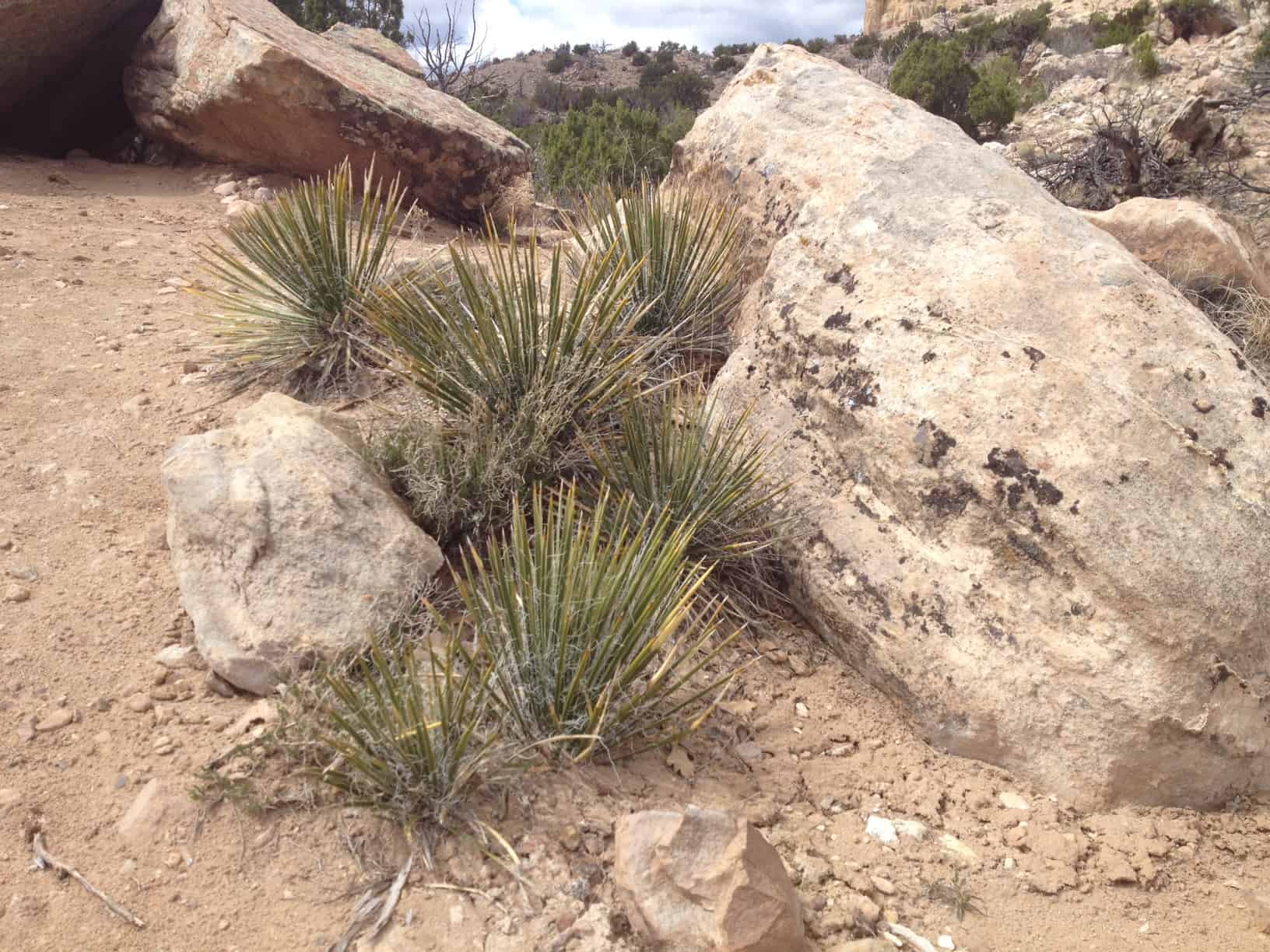
Cluster of Yucca harrimaniae (or are they Yucca angustissima?)
In the limited research I did, I discovered that there is also a possibility that the yuccas I saw at Ghost Ranch might also be Yucca angustissima. And it seems that there is disagreement among botanist about these two species of Yucca, and what distinguishes them. For the sake of simplicity, and at the risk of being wrong, I will refer to these yuccas as Yucca harrimaniae. Some people call Yucca harrimaniae by the common name Harriman’s Narrow Leaf Yucca.
I have seen these in the Denver area, planted in gardens, but I had never before noticed them in the wild, as I am usually accustomed to only seeing Yucca glauca, which is quite common in natural areas of northern and eastern Colorado. That is why I was so excited to see them. The Yucca harrimaniae leaf color is less blue-grey than Yucca glauca (glauca or glaucous translates to “blue-grey” in Latin), and I think Y. harrimaniae exhibits more of the curly white “side hairs” than the Y. glauca. Like all other yuccas, these will sport a beautiful flower stalk in spring to early summer.
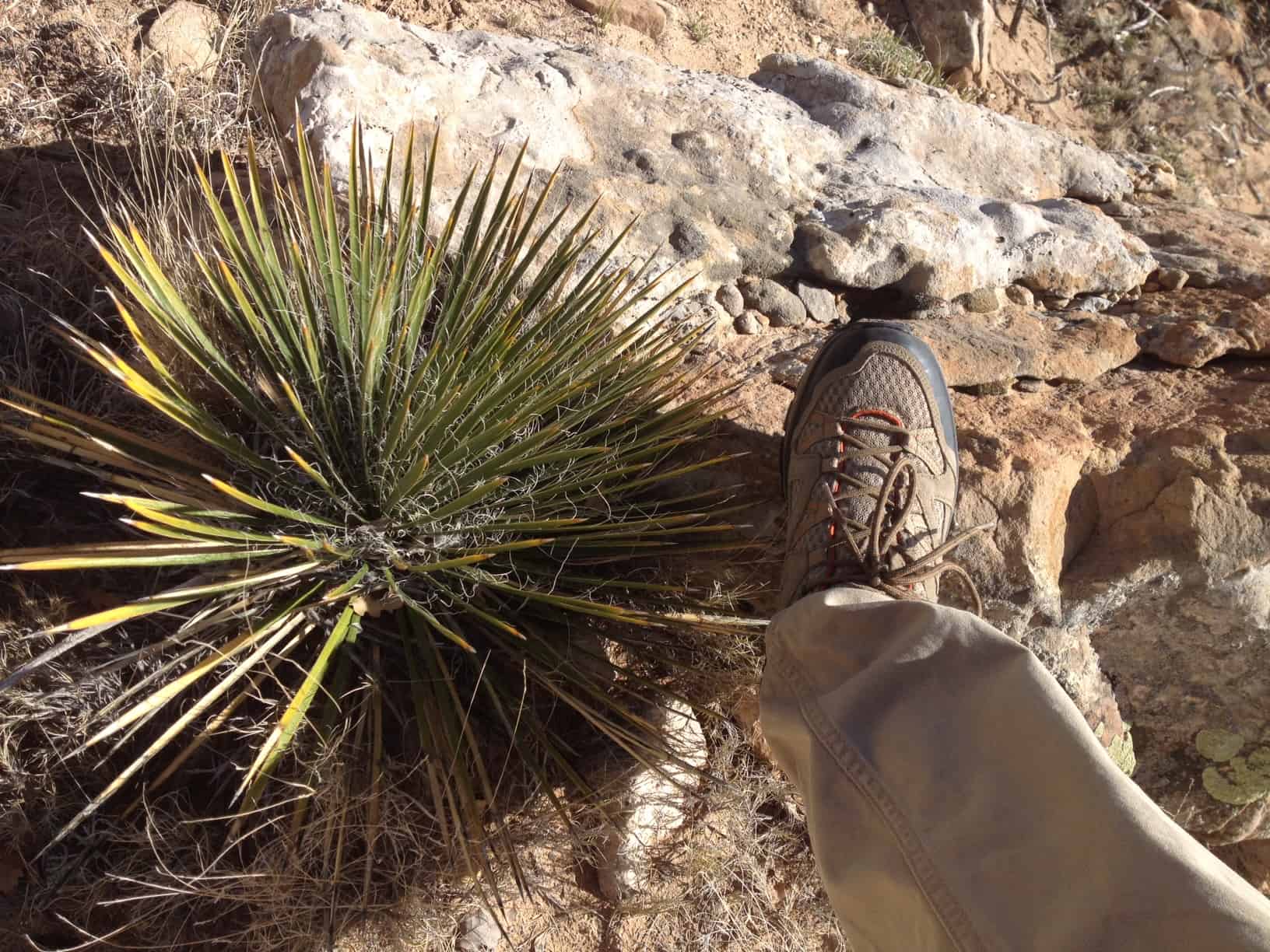
My 11″ shoe as a size comparison.
This is the official blog of Outdoor Design Group, Colorado Landscape Architects. For more information about our business and our services, click here.
Related Posts:
by Todd Rutherford
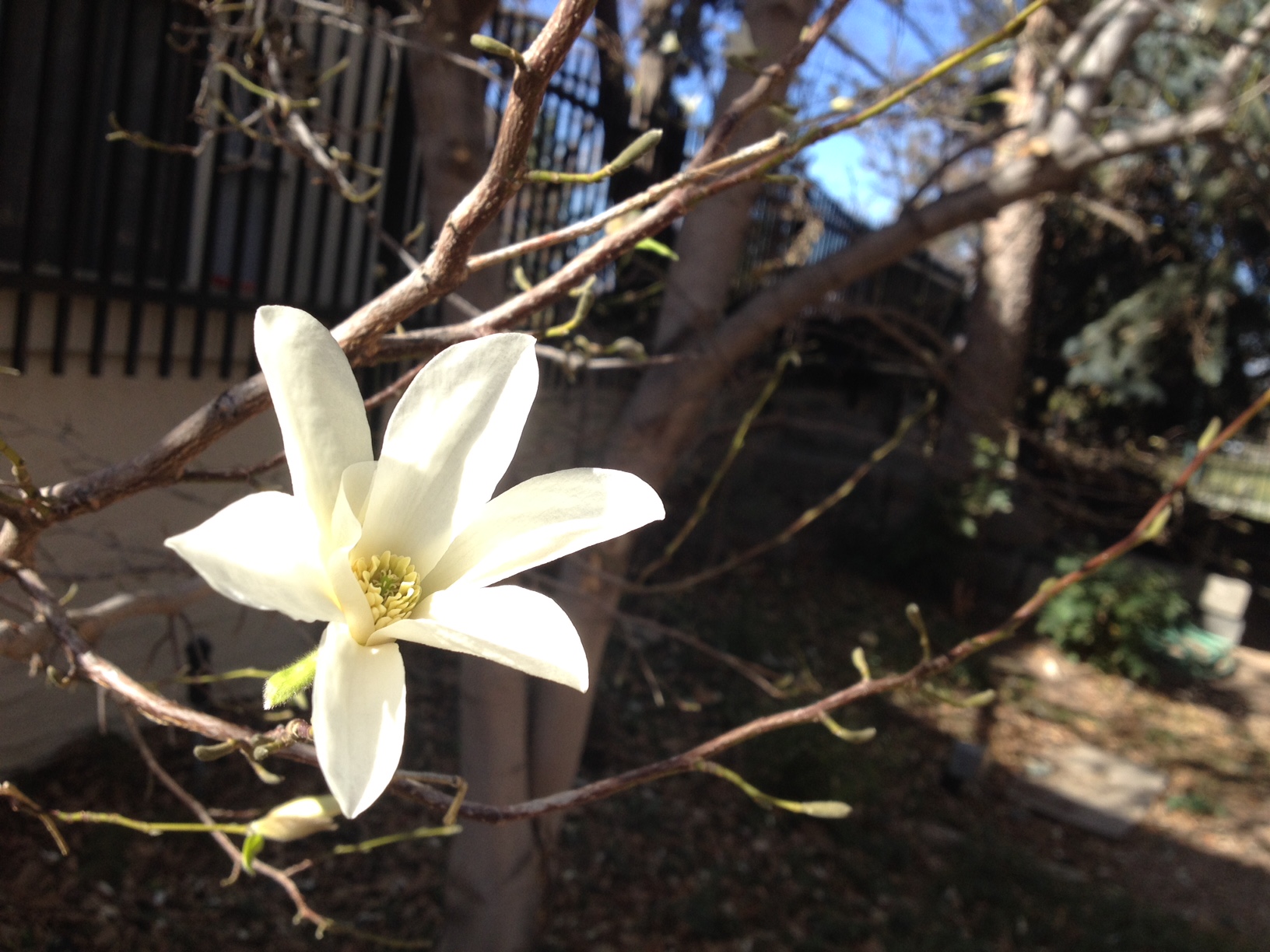
As Denver slips into a typical high plains spring weather pattern of sloppy snow storms interspersed with breezy sunshiny days, I wanted to share these recent photos of a magnificent magnolia at the Denver Botanic Gardens. This particular variety of magnolia packs a double punch of gorgeous silky blooms, which also emit an intoxicating scent. I’d describe the scent as a mixture of citrus and rose. Amazing!
This particular magnolia is called a Yulan or Jade Lily magnolia (scientific name: Magnolia denudata). It is native to China, and has been grown in Chinese Buddhist temples for more than a thousand years. The Magnolia is an ancient genus, appearing before bees did. Botanists have theorized that magnolias evolved with beetles as their main pollinators.
I’m enjoying these pictures as the rain is slowly turning to snow outside my window, with the thought that those wonderful magnolia flowers may perish if the snow gets too heavy or if the temperature drops much below freezing. Perhaps their fleeting nature makes these magnolia flowers all the more beautiful.
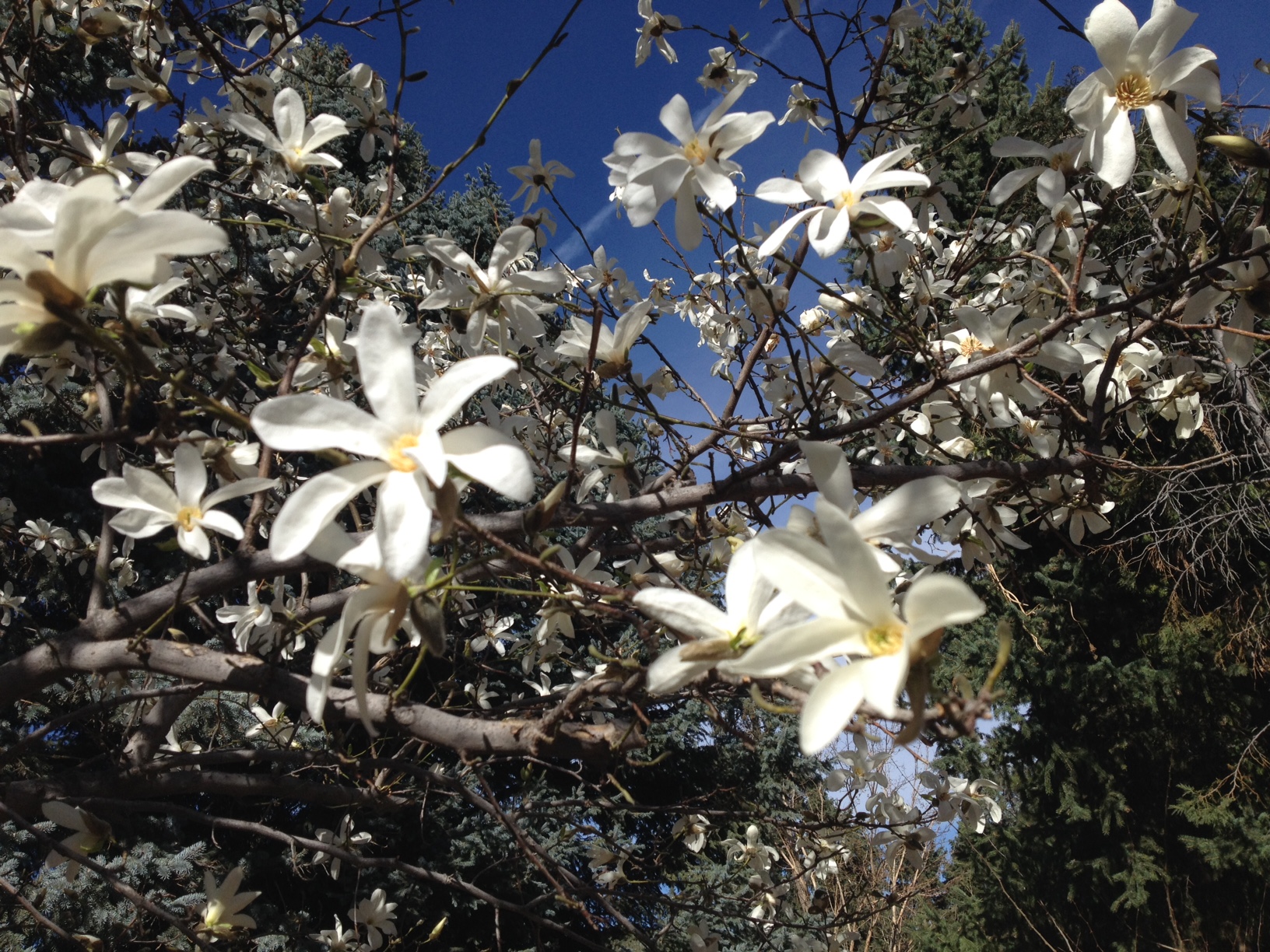
This is the official blog of Outdoor Design Group, Colorado Landscape Architects. For more information about our business and our services, click here.
Related Posts:
by Todd Rutherford
Located in Littleton, Colorado, The Gardens at Columbine is a memory care/assisted living facility on which Outdoor Design Group provided landscape design services. This site was an expansion of an existing assisted living facility onto adjacent property. This new building provides a space for adding memory care services to the facility’s roster of other existing services for senior citizens.
As the new building was being planned for this recently acquired property, we designed the outdoor spaces, walkways and landscaped gardens to surround this new structure. Because the site was not terribly large, and the proposed building sizable in scope, this provided several challenges. From how to fit parking spaces into a small space to designing safe and sound emergency exit pathways, this project was a challenging but satisfying endeavor.
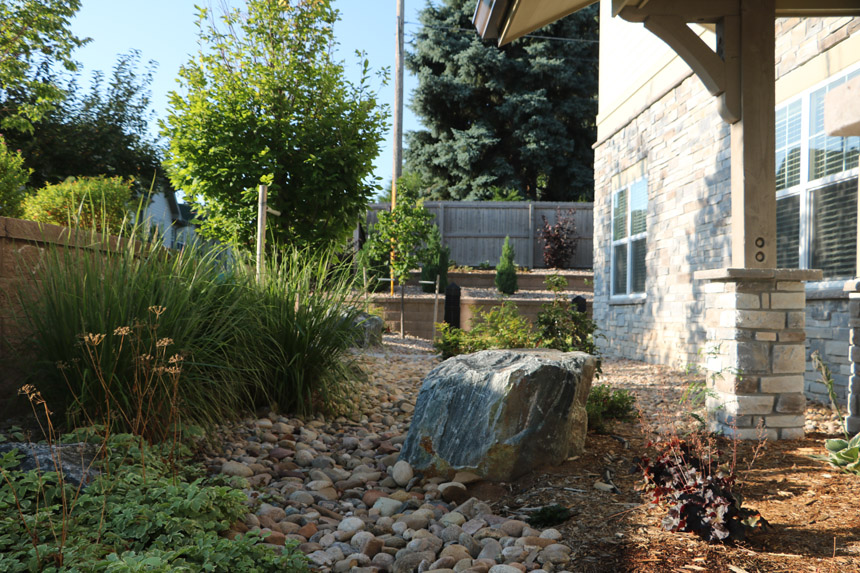
One of the first challenges we had to face was how to provide a working landscape at the east entrance to the building. This entrance is near the other existing building, and is the preferred access point for employees traveling between buildings. The difficulty here was adding an entrance walkway that would transition from a higher elevation parking lot then drop down to a doorway that sits slightly below grade relative to the parking lot. Retaining walls were necessary in this area so we added built in benches at the walls to provide useful amenities along this path. Step lights in the walls provide a soft illumination for this well used pathway.
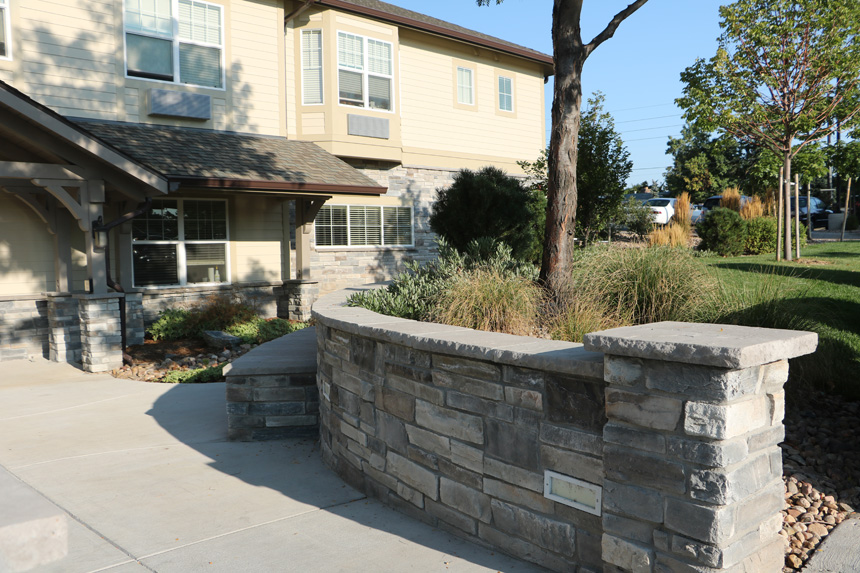
Prior to construction, the original site was filled with trees, as it had been a large lot with one single family home on it. While some of the existing trees could not be saved due to the scope of the proposed building, we worked with the city and the owner to save as many trees as we could. For example we spent a significant time working and re-working the landscape plan with the civil engineer on the project to reconfigure the entrance drive and parking areas to save several existing trees on the north and east sides of the property.
The namesake gardens are located in the internal courtyard of the project. These outdoor spaces give residents of the facility a charming scene that invites them to go outside and get some fresh air amid the trees, shrubs and raised bed gardens.
Stepping out of the building and into the courtyard, the first of the raised planting beds one encounters is a large circle comprised of a poured-in-place concrete seat wall that is chock full of colorful perennials, wispy ornamental grasses, low growing shrubs and scraggy boulders.
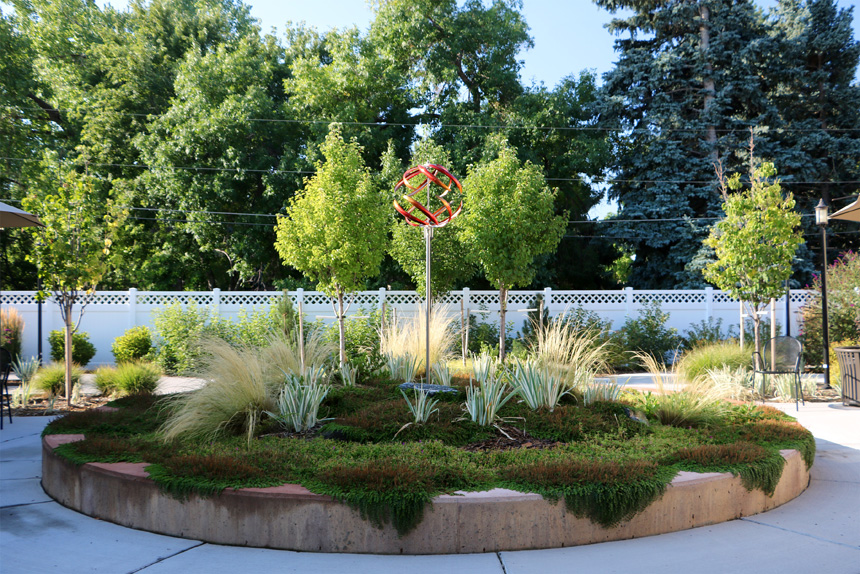
As you step further into the courtyard, you encounter wooden raised bed gardens where residents of the facility can indulge their gardening bug and get their hands dirty in the soil. These two beds are situated on opposite sides of the courtyard, connected by a concrete walk where the residents can circumnavigate to achieve fresh air and exercise, ensconced in the protective calm of these hidden gardens.
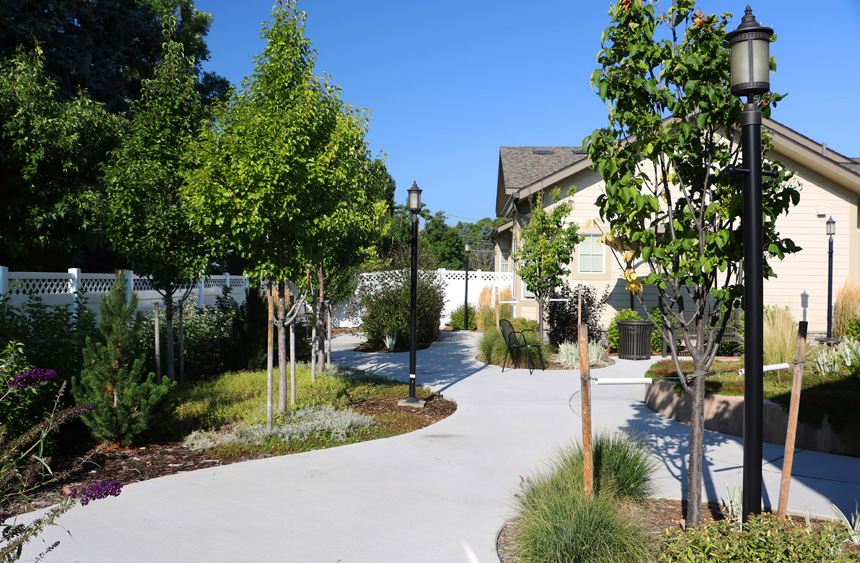
This is the official blog of Outdoor Design Group, Colorado Landscape Architects. For more information about our business and our services, click here.
Related Posts:













